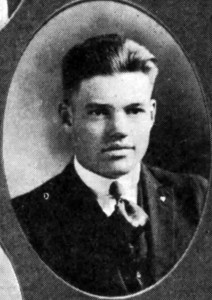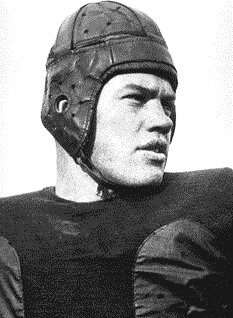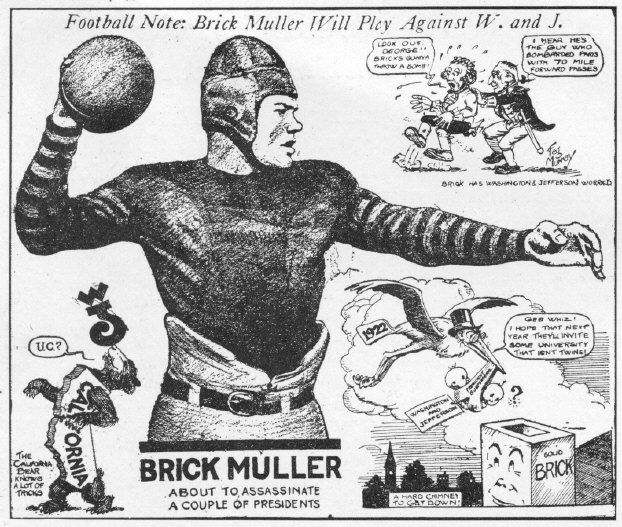Harold “Brick” Muller ’19

An Olympian and the first player west of the Mississippi to be named a first team All-American in football, Harold “Brick” Muller, Class of 1919, was a three-sport star at Oakland Tech: track and field, football, and baseball. He attended high school in San Diego before transferring to Tech, likely when his football coach from San Diego, Clarence Price, was hired as an assistant coach at Cal. He followed Price to Cal for college, finding time to win a silver medal in the high jump in the 1920 Olympic games, in Antwerp, Belgium, with the encouragement from Cal track coach Walter Christie. He was 19 at the time.
 Upon returning to the Cal gridiron, Muller led the team to victory in the 1921 Rose Bowl. During that Rose Bowl game, Muller had two interceptions, three recovered fumbles, five receptions and three completed passes, as the Bears crushed Ohio State in a 28-0 upset. One of Muller’s plays during that game was so unusual that it was featured in a print issue of Ripley’s Believe it Or Not. No surprise that in the same year, Muller became the first player west of the Mississippi to be named a first team All-American, an honor he would bring home again in 1922. Muller was signed to the Los Angeles Buccaneers in 1926, and became both head coach and a player until the team folded in 1927.
Upon returning to the Cal gridiron, Muller led the team to victory in the 1921 Rose Bowl. During that Rose Bowl game, Muller had two interceptions, three recovered fumbles, five receptions and three completed passes, as the Bears crushed Ohio State in a 28-0 upset. One of Muller’s plays during that game was so unusual that it was featured in a print issue of Ripley’s Believe it Or Not. No surprise that in the same year, Muller became the first player west of the Mississippi to be named a first team All-American, an honor he would bring home again in 1922. Muller was signed to the Los Angeles Buccaneers in 1926, and became both head coach and a player until the team folded in 1927.

The 6’2”, 215 Muller was famous for the size of his hands, and with professional football still in its infancy when he graduated in 1922, he turned to a very different field where dexterous hands were an asset: orthopedic surgery. During World War II Muller, a Major, served with the Army Medical School. He also eventually served as a physician for Cal athletes and for the 1956 US Olympic Team.
Cal established the Brick Muller Award in 1949, which is awarded to the most valuable lineman on the Cal football team. In 1950, Muller was named to the all-time All Star college teams by the Helms Foundation and AP, and was a charter member of the College Football Hall of Fame when it opened its doors in 1951.
